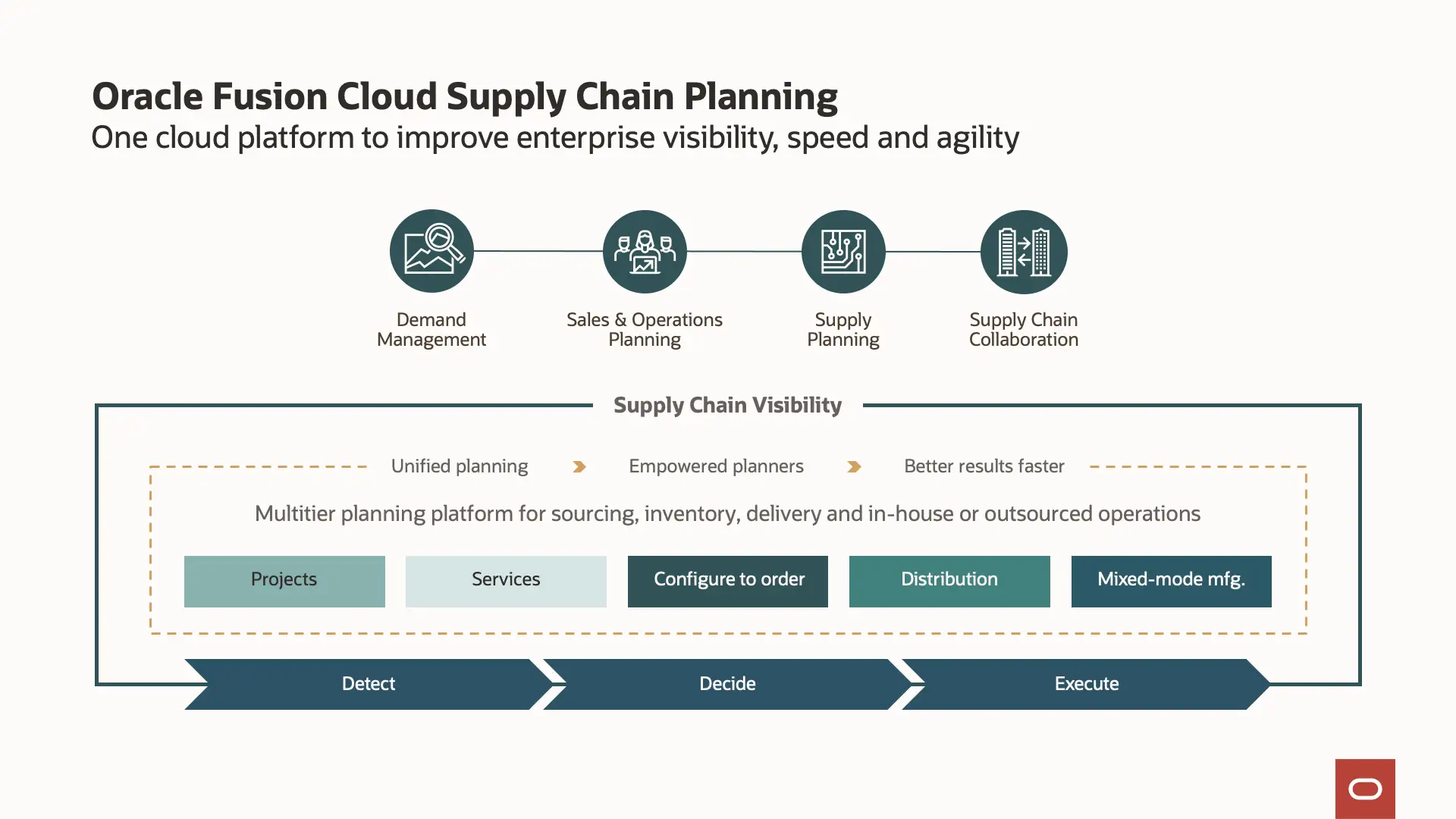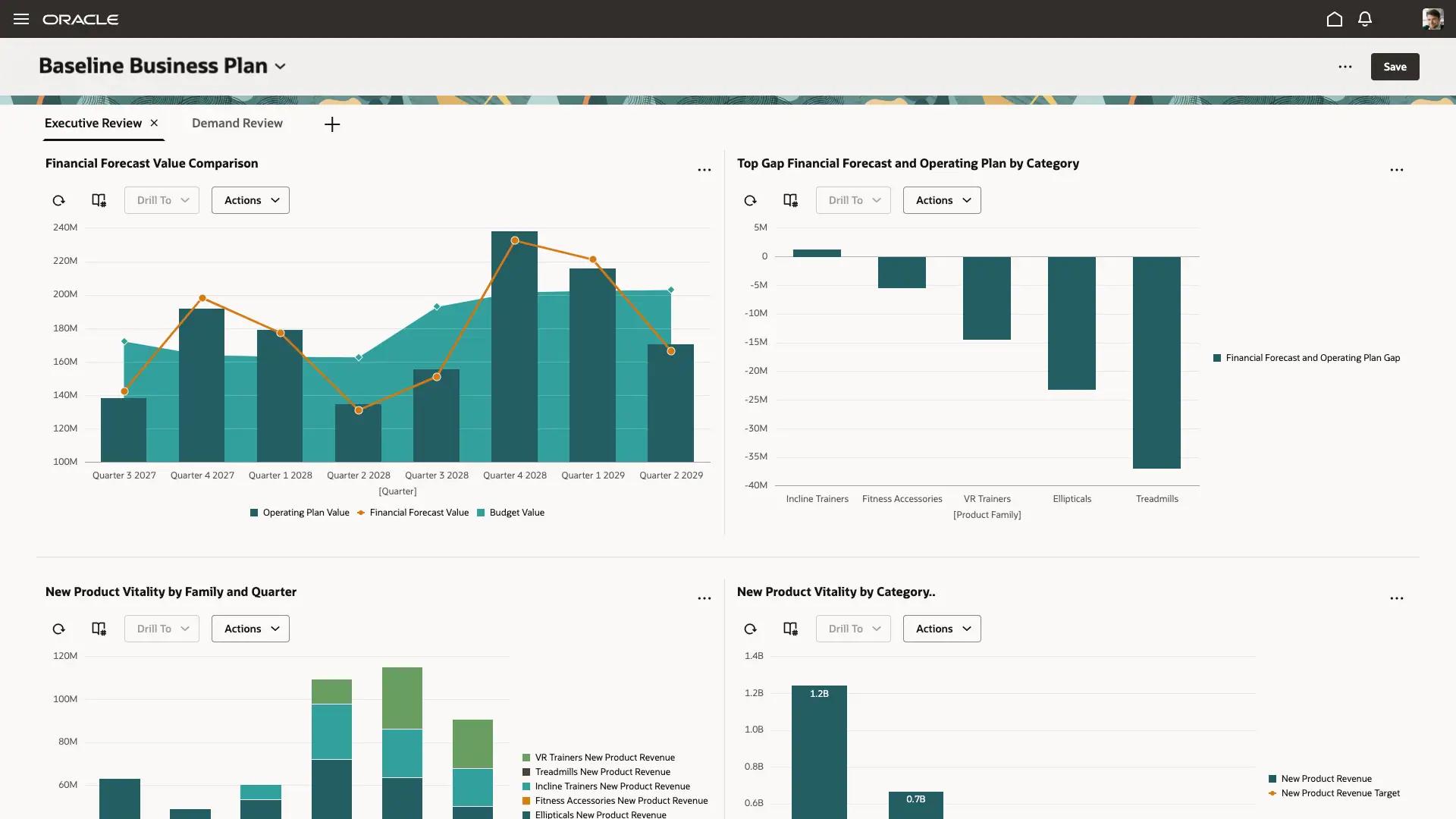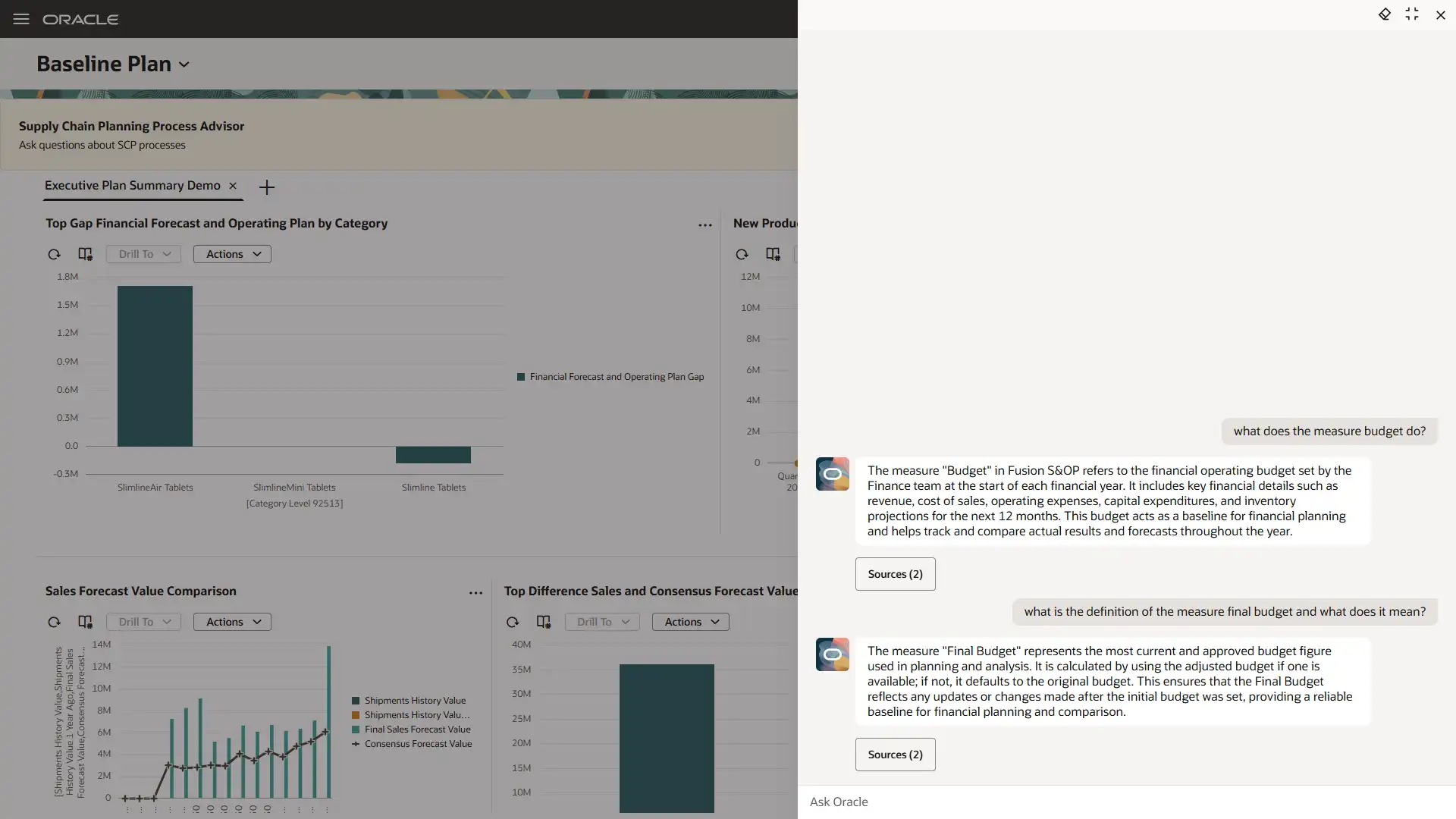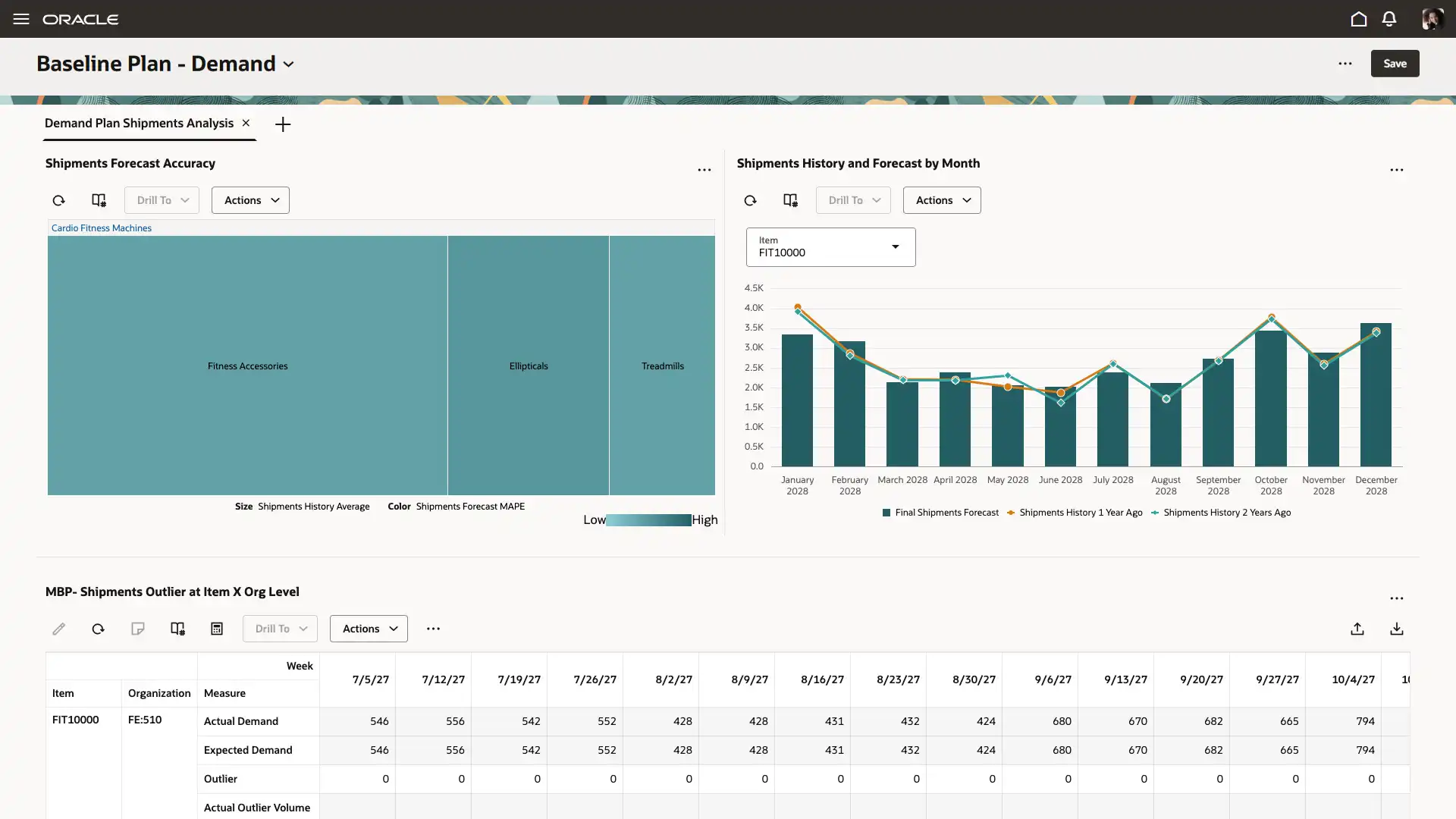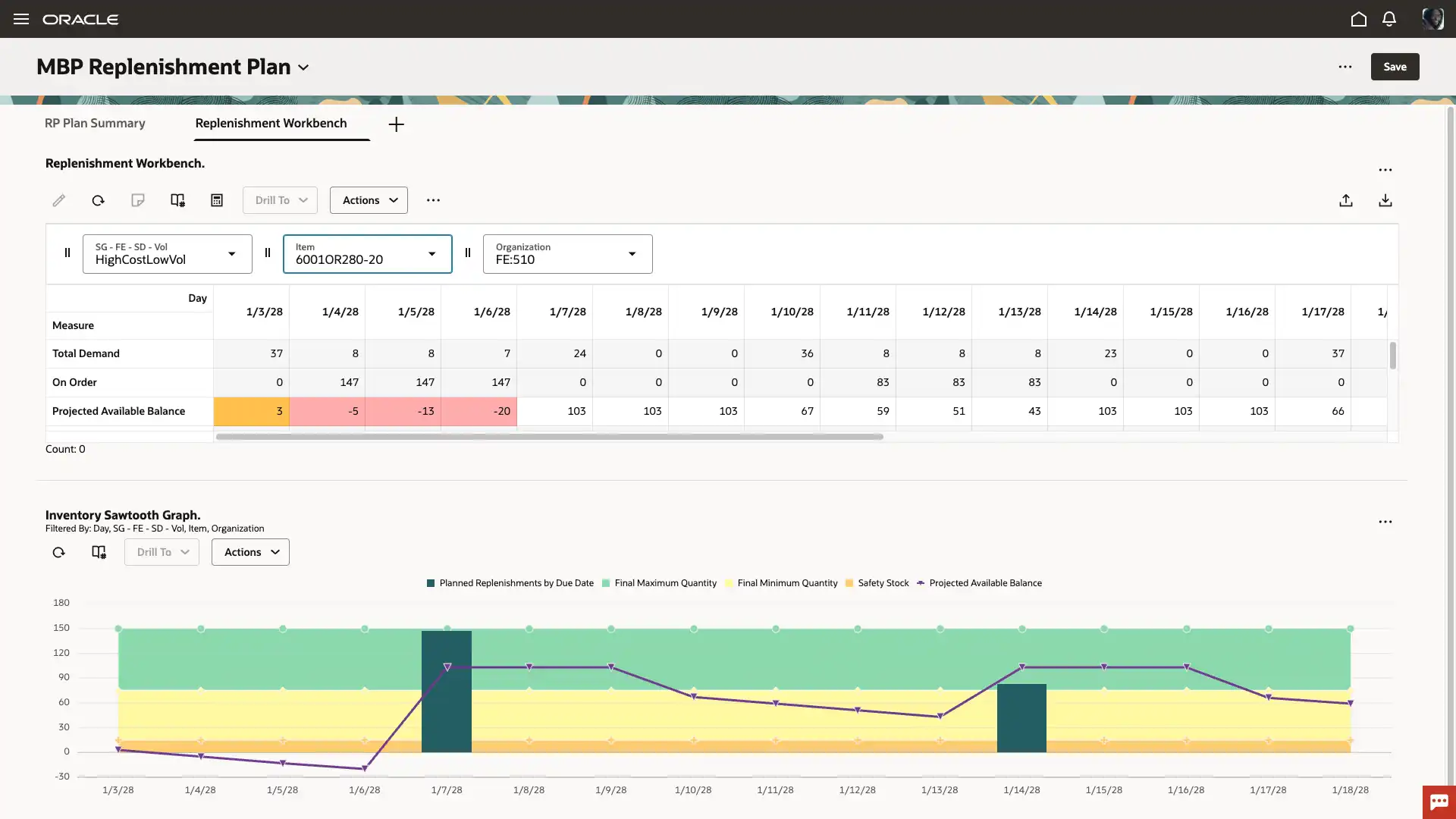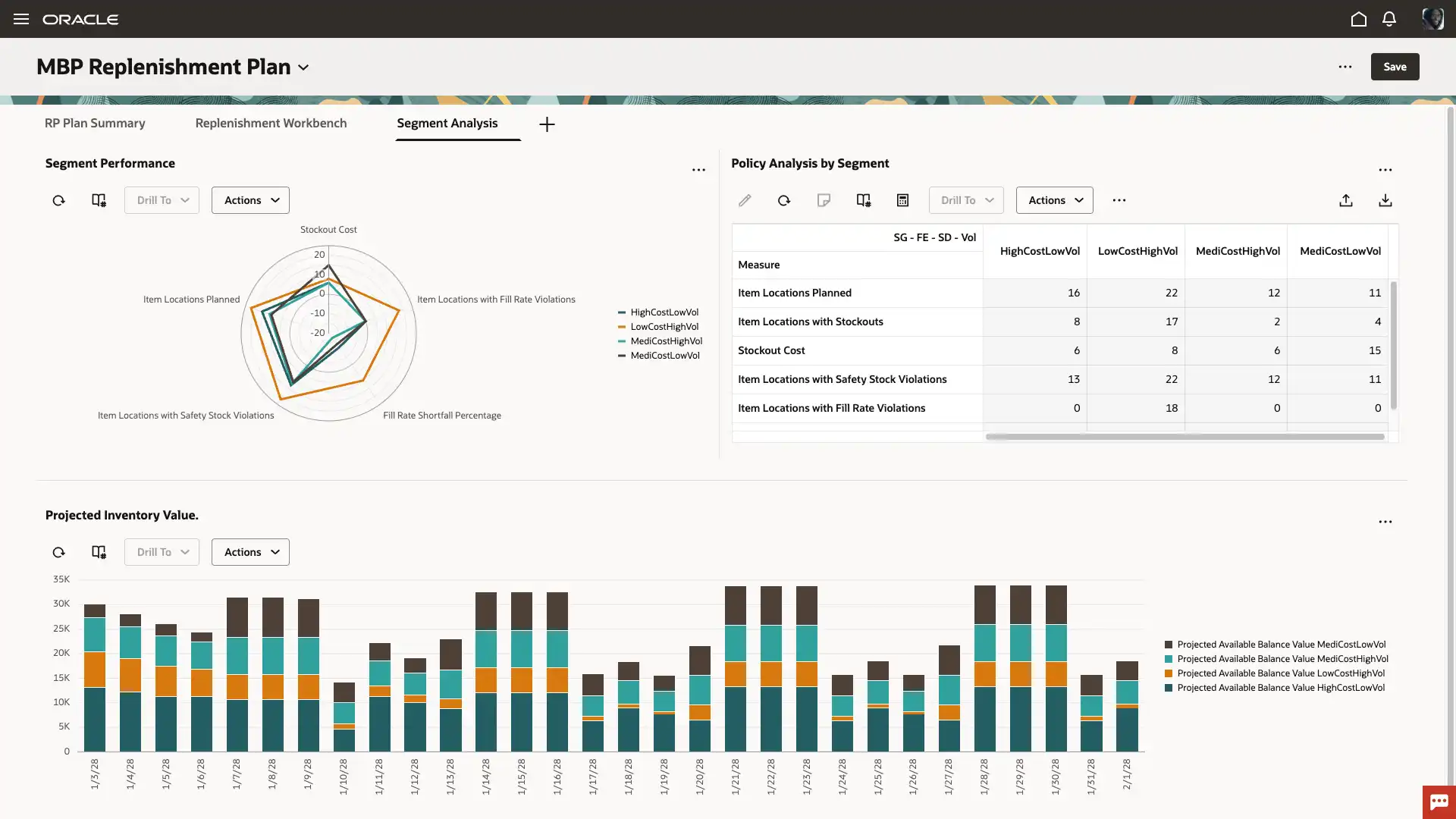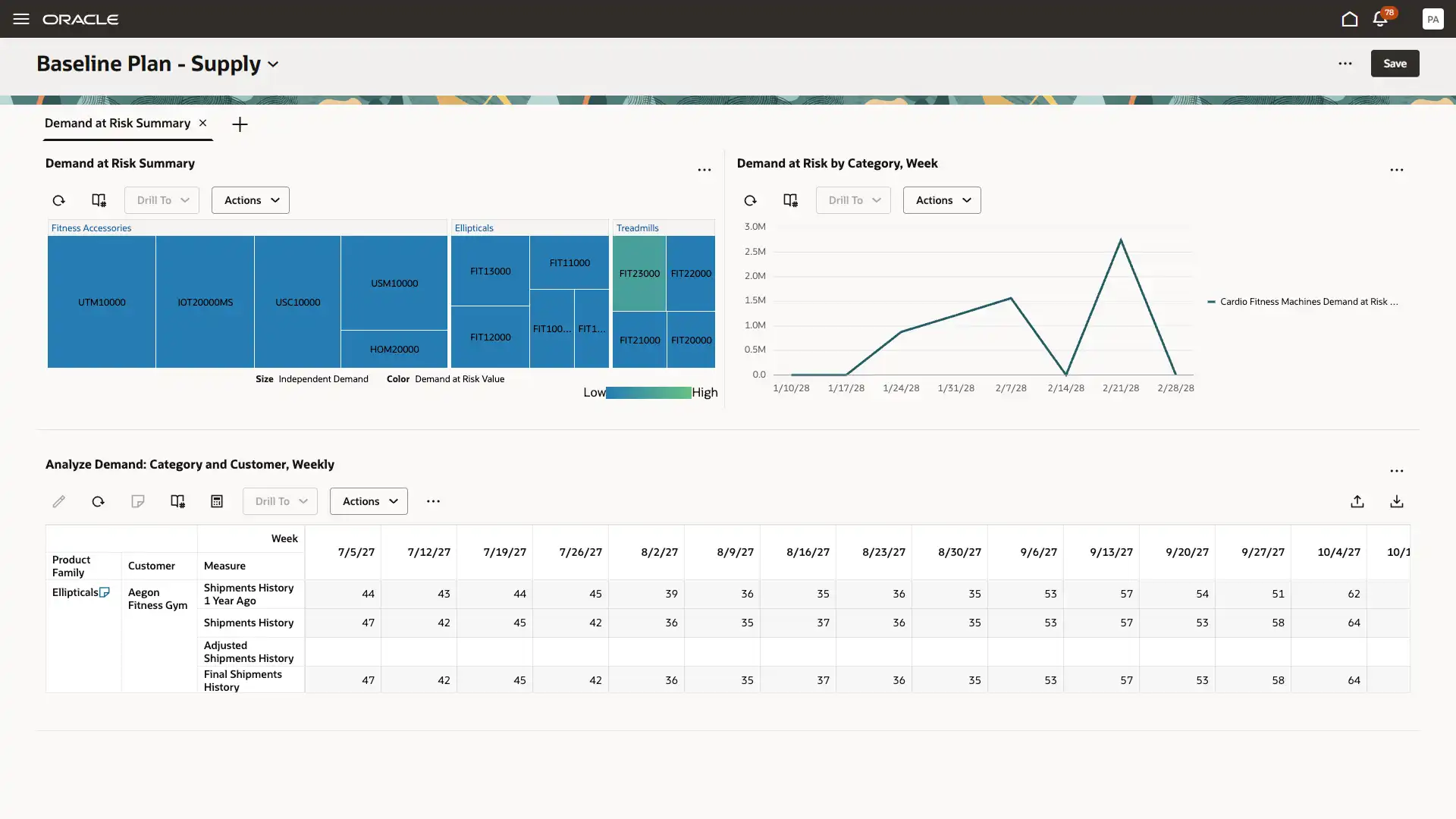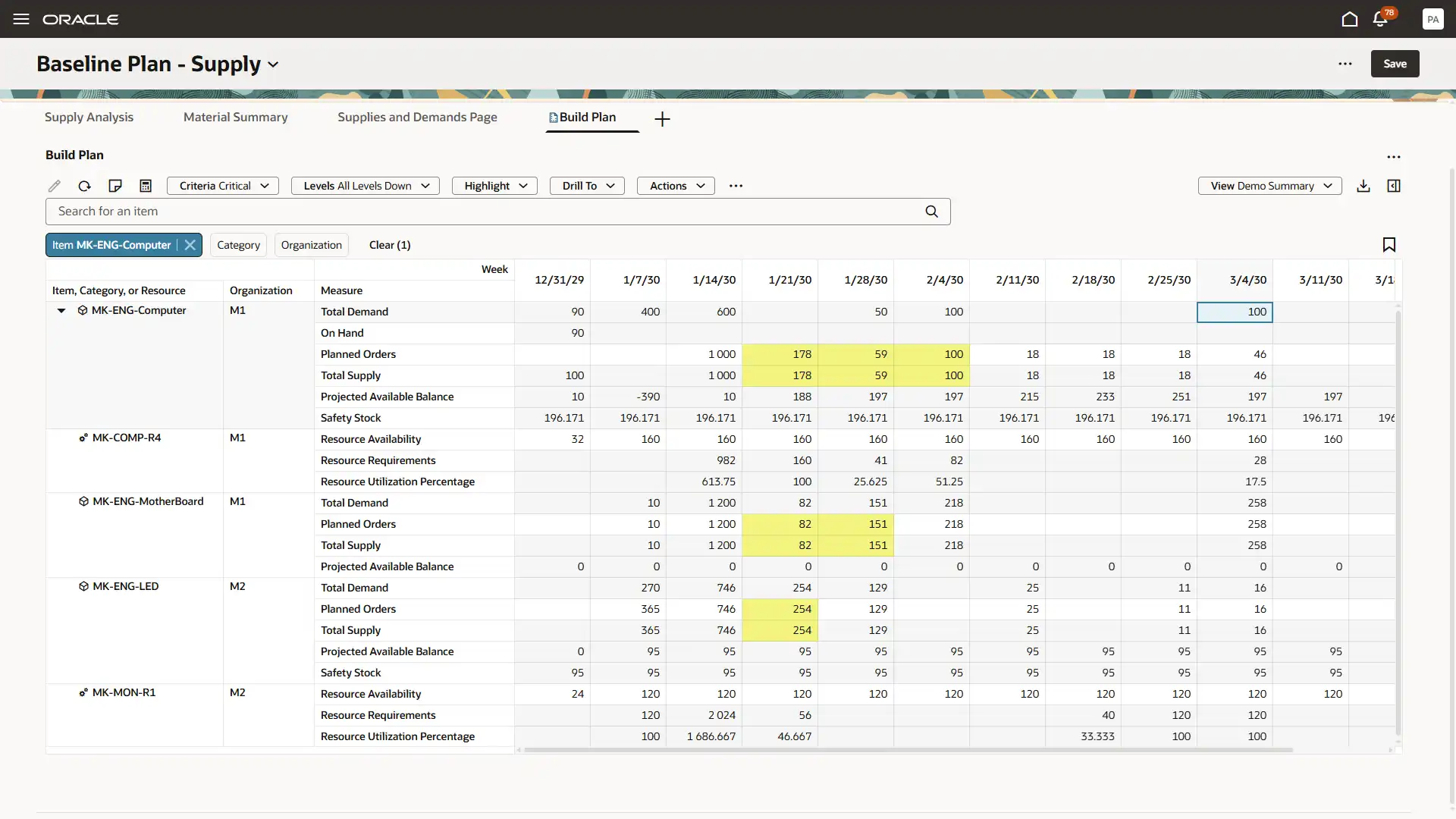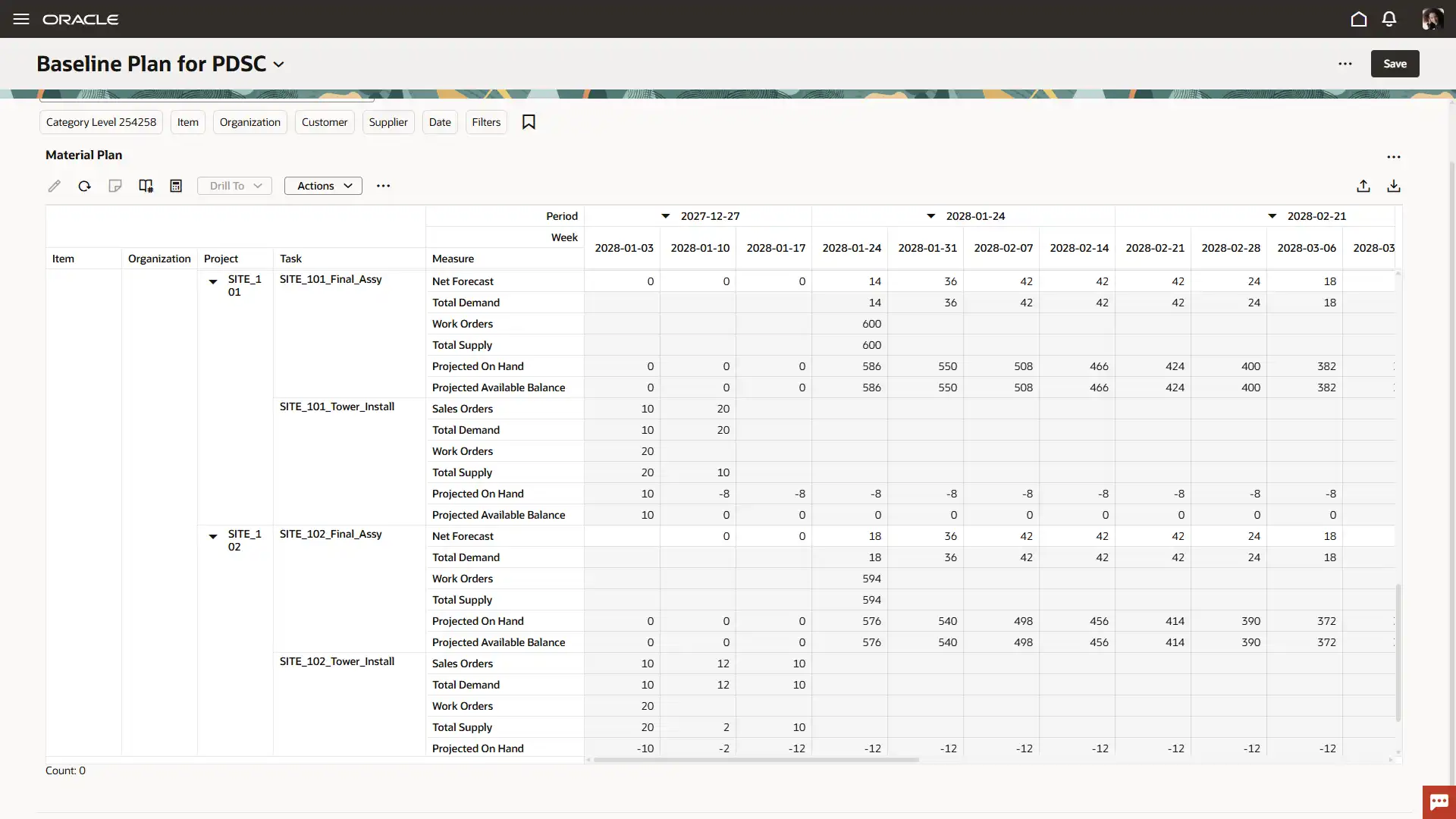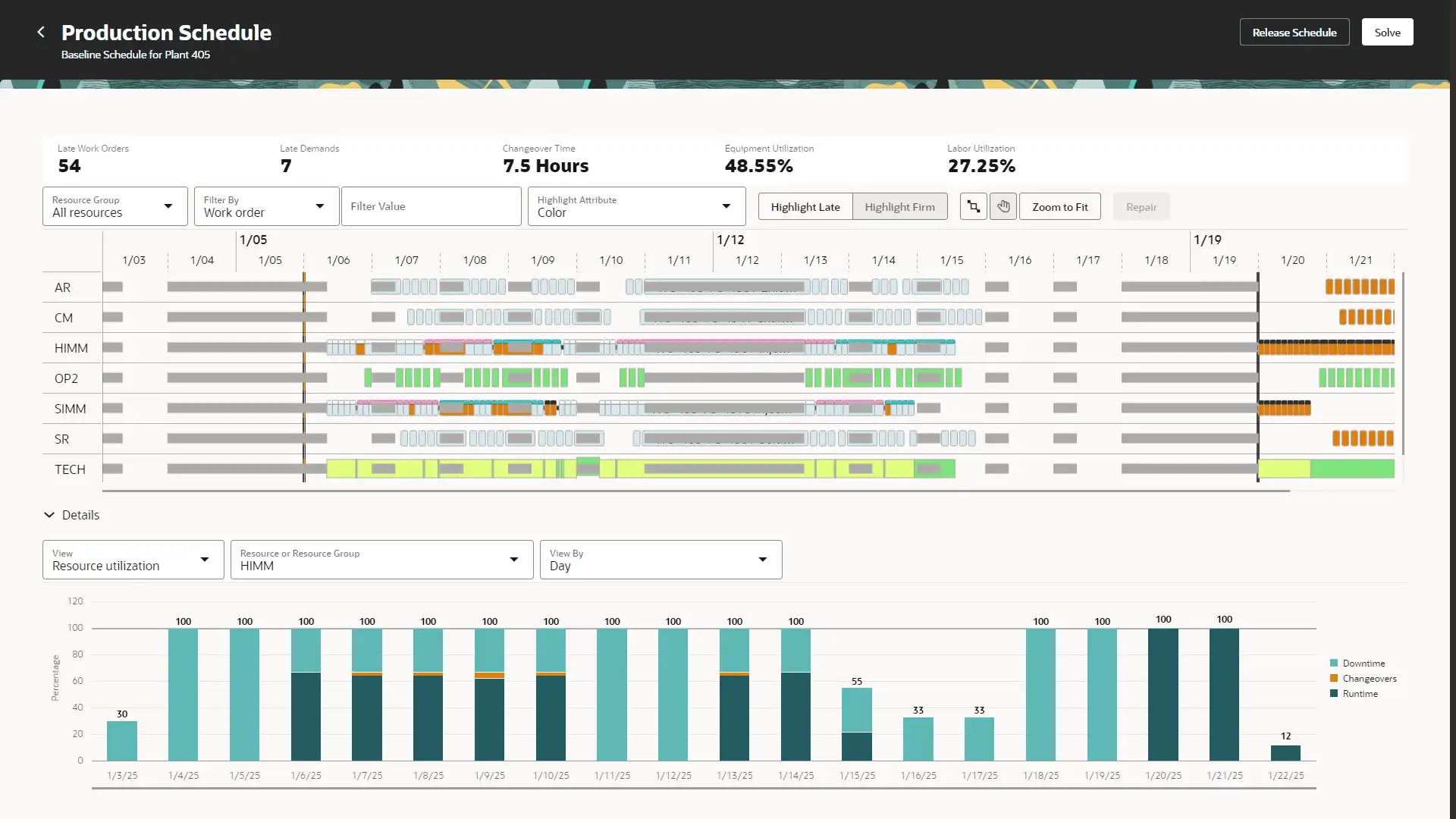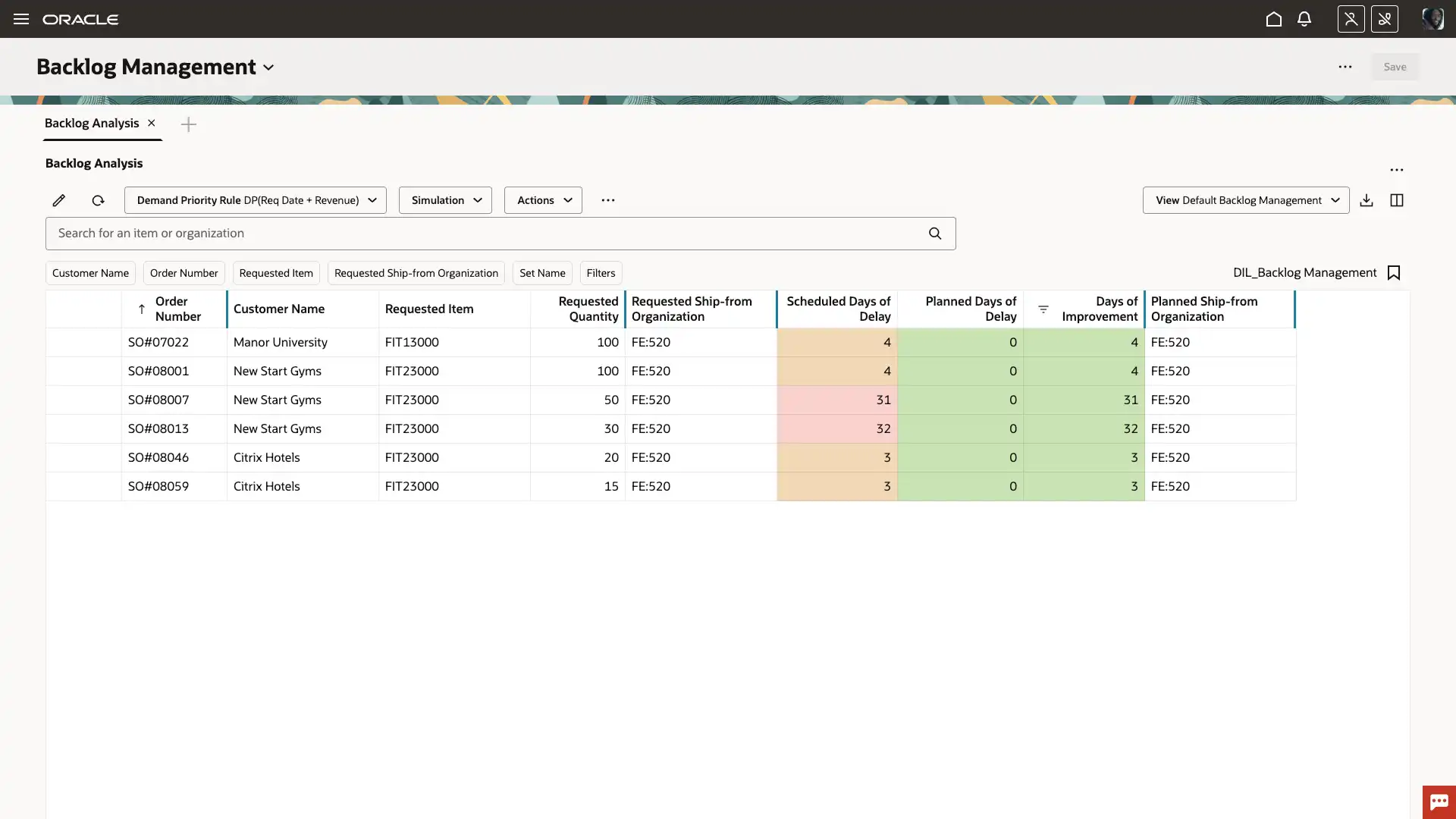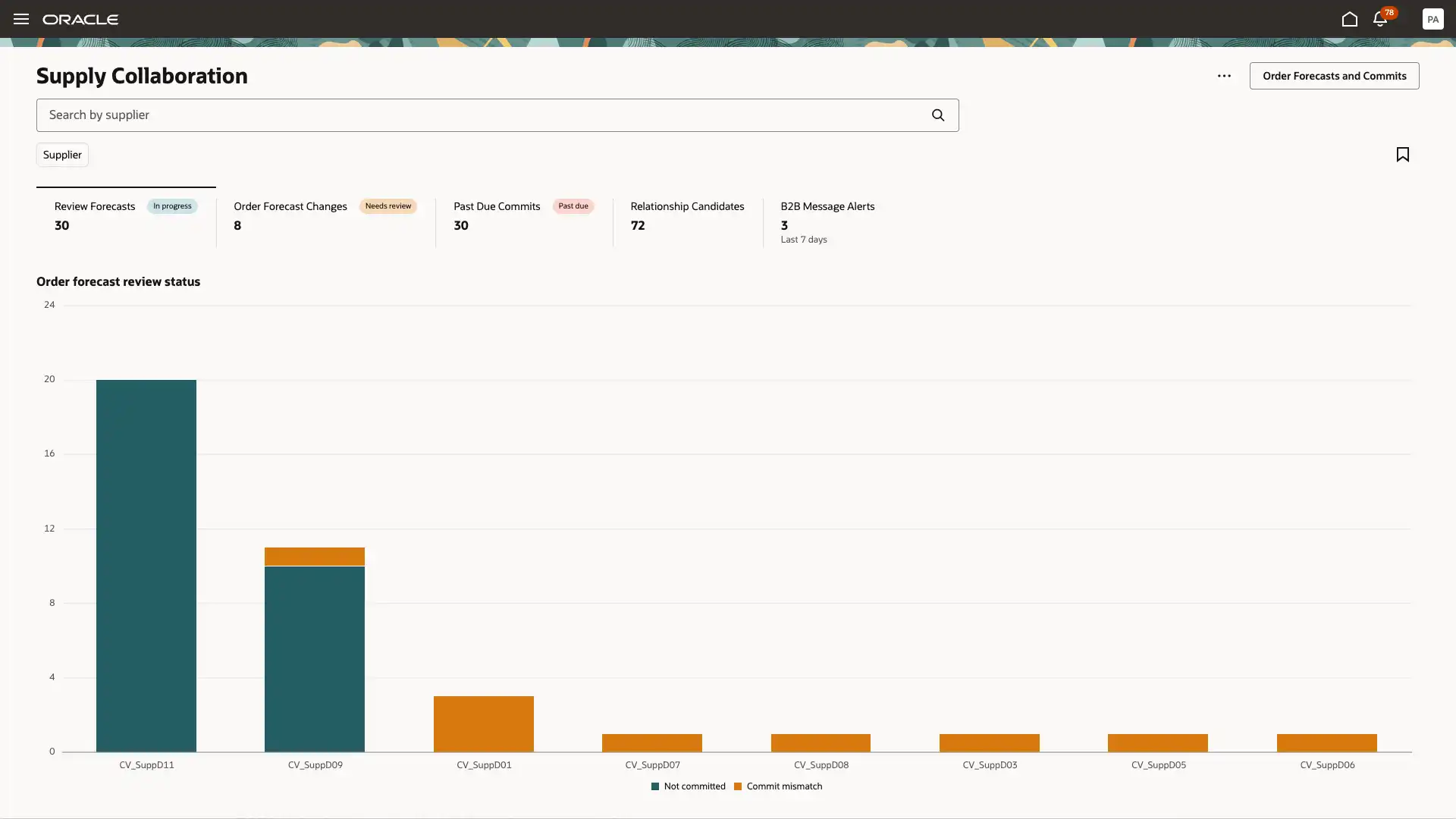Oracle Supply Chain Planning
Get better results faster by managing your supply chain planning solution end-to-end in the cloud. Effortlessly combine demand insights, supply constraints, and stakeholder input, and apply built-in machine learning to improve profitability while accelerating customer service.
See how our customers achieve better results with Oracle’s supply chain planning solution (1:35)

Gartner® Magic Quadrant™ for Supply Chain Planning Solutions
Oracle Supply Chain Planning can help improve demand forecasting, automate replenishment, and map out the entire supply chain with built-in AI, machine learning, and predictive insights. Find out why Gartner® named Oracle a Leader in its 2025 Magic Quadrant™ for Supply Chain Planning Solutions.*
Oracle Fusion Cloud Supply Chain Planning
Learn how Oracle’s supply chain planning software supports the specific requirements of a wide variety of businesses on a unified platform, including high technology and manufacturing enterprises, project-oriented organizations, wholesalers and distributors, healthcare providers, and service-based supply chains.
Sense, predict, and shape demand for better outcomes
Next-generation demand management incorporating replenishment planning, segmentation capabilities, new product introduction, and machine learning for planners.
Sense demand to improve visibility
Transform qualitative and quantitative signals from diverse sources into business insights.
Analyze demand by segment
Dynamically group items, locations, and customers with similar behavior into segments that share a demand profile.
Predict demand to manage variability
Use machine learning to generate more accurate forecasts, while measuring and tracking the root cause of forecast error.
Evaluate the impact of demand changes
Analyze the cause and effect of seasonality, promotional events, product attributes, and leading indicators to make adjustments to inventory.
Shape demand to achieve business objectives
Simulate forecast scenarios, collaborate with stakeholders, and manage new product introductions to improve business performance.
Establish a robust demand plan for your manufacturing strategy
Track changes, monitor exceptions, and synchronize with sales and operations planning (S&OP) and supply plans to ensure a well-functioning process.
Enable demand-driven replenishment
Make replenishment planning easy and effective. Drive more accurate fulfillment with inventory policies and consumption rules tailored to demand segments.
Plan for customer-centric demand
Integrate demand-driven consumption, inventory and fulfillment to meet customer-specific requirements.
Predict consumption to optimize service levels
Forecast demand to anticipate seasonal, trend, and event-based changes and keep supply within inventory thresholds.
Tailor inventory policies to demand segments
Automatically assign replenishment parameters to groups of items and locations based on their behavior to reduce stockouts.
Simulate and resolve replenishment issues
Graphically simulate and adjust the replenishment strategy for individual items and locations to improve performance.
Automate continuous replenishment
Calculate replenishment requirements and release of planned orders automatically as consumption occurs.
Make more effective replenishment buying decisions
Consolidate orders to maximize price breaks and save on transit costs while maintaining service levels.
Optimize resources for service and cost
Identify and execute the best supply to demand plans. Plan items across multitier locations, identify and address the most important problems, and simulate potential responses to optimize customer service and the cost of inventory.
Unify planning processes
Balance demand and supply, optimize inventory for service and cost, and plan for multiple material and capacity scenarios.
Plan the entire supply chain
Plan process, discrete, project-driven, configure-to-order, and outsourced production, as well as drop-ship and back-to-back fulfillment.
Monitor and prioritize supply problems
Use embedded analytics to review impact on KPIs, such as margin and turns, and navigate to focus on problem areas.
Predict and proactively respond to disruptions
Review and collaborate on planned supply order changes with internal and external stakeholders. Utilize built-in machine learning or integration with Internet of Things (IoT) systems.
Improve production efficiency
Schedule production during the day to maximize use of bottleneck resources and available components. Reduce work in process inventory, waste, and expedites. Visualize how work order operations are allocated to resources. Drag and drop to simulate the best response to issues or changes, and release schedules for execution in real time.
Create high-quality, executable schedules
Use real-time resource availability and work orders in Oracle Cloud Fusion Manufacturing to create feasible schedules that take the latest material, capacity, and calendar constraints into account.
Optimize changeovers to minimize downtime
Increase throughput and asset utilization with schedules that make efficient changeovers based on your industry attributes, minimizing idle time.
Resolve shop floor bottlenecks
Schedule work order operations with your desired attribute sequence to maximize the efficiency of your production lines. Reduce bottlenecks by offloading to alternate resources.
Simulate the impact of schedule changes
Easily inspect schedules and analyze production issues in a visual Gantt chart. Make drag-and-drop adjustments and edit dispatch lists as necessary. Run quick in-line simulations and what-ifs to resolve issues.
Minimize the effect of unplanned downtime
Run and repair schedules dynamically to deal with unexpected machine outages, labor shortages, material delays, and changes in order priorities. Release adjusted schedules as needed during the day for instant shop floor execution.
Proactively monitor your shop floor
Evaluate how your factory is scheduled at a glance, with interactive analytics that reveal insights about changeover time, resource utilization, and late orders.
Learn more about executing your production schedule with Oracle Cloud Manufacturing
Intelligently manage open orders
Prioritize your open orders to reduce delivery delays, increase sales, or achieve margin targets when supply or demand changes. Simulate multiple fulfillment alternatives, and select those that best meet your business objectives.
React intelligently to supply and demand changes
Use available supply to schedule new orders and reduce delays while respecting existing promise dates.
Fulfill the most important orders first
Prioritize orders in the backlog using flexible business rules that maximize order revenue, margin, and service.
Solve sourcing and fulfillment problems
Model what-if changes to sourcing, transit mode, and shipping constraints to respond quickly and find the best solutions.
Perform what-if order planning
Simulate the scheduling and availability impact of a potential order on the rest of the backlog.
Align the enterprise with continuous planning
Align business plans and operations across your sales, marketing, finance, and supply chain organizations. Build agility into your operations to orchestrate change across your organization and balance demand and supply for the best possible outcomes.
Align the enterprise
Leverage built-in, integrated business planning processes and collaborative tools to drive consensus among stakeholders.
Build a realistic aggregate plan
Balance aggregate supply and demand by modeling and comparing alternative constrained planning scenarios.
Achieve business objectives
Gain insight from personalized, KPI-driven dashboards to support revenue growth and cost management tradeoff decisions.
Act confidently on the consensus plan
Quickly aggregate and disaggregate demand and supply plans to optimize utilization and investment decisions.
Connect your planning, execution, finance, and operations
Transform plans into execution and monitor activity to detect unexpected events using IoT, AI, and prescriptive analytics. Simulate and evaluate alternative responses to maintain or improve business targets.
Reduce decision latency
Leverage real-time planning and execution details to act on negative trends faster and more effectively.
Consolidate all planning in a single hub
Improve your short- and long-range strategic planning by seamlessly integrating planning and execution into a single data model.
Enhance visibility across the enterprise
A unified data model provides a single view for all participants. Use advanced analytics to provide business outcome projections, simplifying business complexity and enabling managers to make timely decisions.
Engage trading partners to reduce supply chain disruptions
Collaborate on supply and negotiate forecast commitments with strategic suppliers and contract manufacturers. Resolve issues before they become customer service problems.
Collaborate on order forecasts
Share order forecasts with suppliers, review their changes, and integrate them into your supply planning processes.
Orchestrate supplier commitments
Manage the end-to-end process of negotiating supplier commitments and enforcing service-level agreements.
Enable vendor-managed inventory
Allow suppliers to trigger orders and confirm shipments for their consigned and unconsigned materials at your sites.
Collaborate with contract manufacturers
Automatically update contract manufacturing work order status based on the outsourced production progress.
Provide online supplier access
Offer suppliers easy, interactive access to collaboration and visibility processes through the supplier portal.
Synchronize multiple supply tiers
Capture on-hand, on-order, and in-transit supply from contract manufacturers and suppliers to enhance supply plans.
Respond proactively to supply chain changes
Get better visibility into upstream supply both internally and with strategic suppliers and contract manufacturers. Get early warnings to mismatched expectations and leverage available supplier capacity in your supply plans.
Analyze supply chain activity in real time
Use Oracle Transactional Business Intelligence (OTBI) to analyze and report on the real-time status your supply chain.
Assess end-to-end supply chain performance
Visualize the overall performance of your global supply chain in Oracle Fusion Analytics Warehouse.
Automate visibility using web services
Get programmatic access to the real-time status of Oracle Supply Chain Management Cloud transactions via REST services.
Use machine learning to predict events
Extend visibility into the future by applying predictive analytics to Internet of Things supply chain signals.
Track activity via a digital thread
Capture and visualize the choreography of supply chain transactions in a blockchain-based digital ledger.
Product tour—Oracle Fusion Cloud Supply Chain Planning
Supply Chain Planning Resources
Get started with Oracle Supply Chain Planning
Supply Chain Planning live demo
Take a walkthrough with one of our supply chain planning solution experts.
Supply Chain Planning Solution Brief
Read an overview of our Supply Chain Planning software solution.
Contact SCM sales
Talk to a team member about Supply Chain Planning.
Gartner, "Magic Quadrant for Supply Chain Planning Solutions", Pia Orup Lund, Joe Graham, Caleb Thomson, Shane Brett, Eva Dawkins, 14 April 2025.
This graphic was published by Gartner, Inc. as part of a larger research document and should be evaluated in the context of the entire document. The Gartner document is available upon request from Oracle. Gartner does not endorse any vendor, product or service depicted in its research publications, and does not advise technology users to select only those vendors with the highest ratings or other designation. Gartner research publications consist of the opinions of Gartner's research organization and should not be construed as statements of fact. Gartner disclaims all warranties, expressed or implied, with respect to this research, including any warranties of merchantability or fitness for a particular purpose. GARTNER is a registered trademark and service mark, and MAGIC QUADRANT is a registered trademark of Gartner, Inc. and/or its affiliates in the U.S. and internationally and are used herein with permission. All rights reserved.

